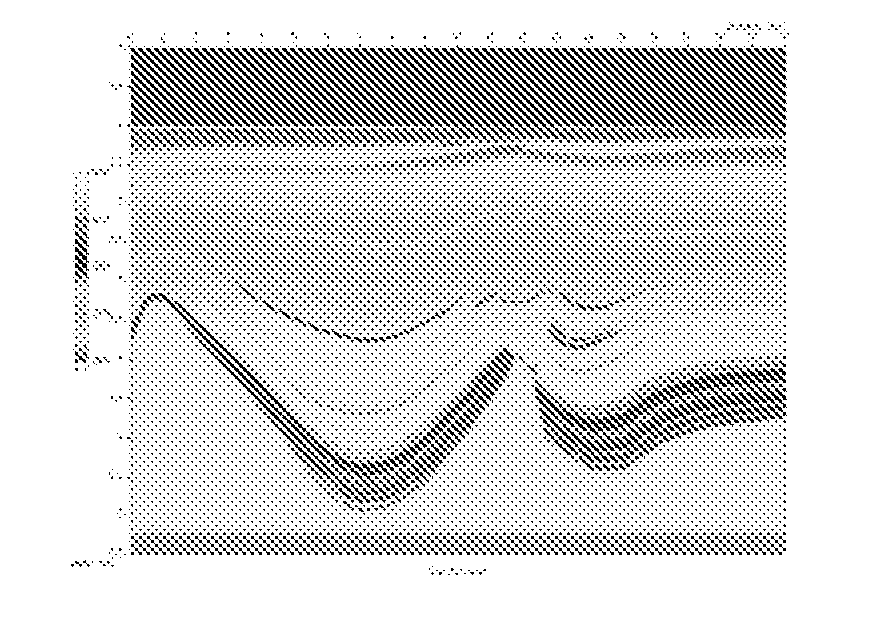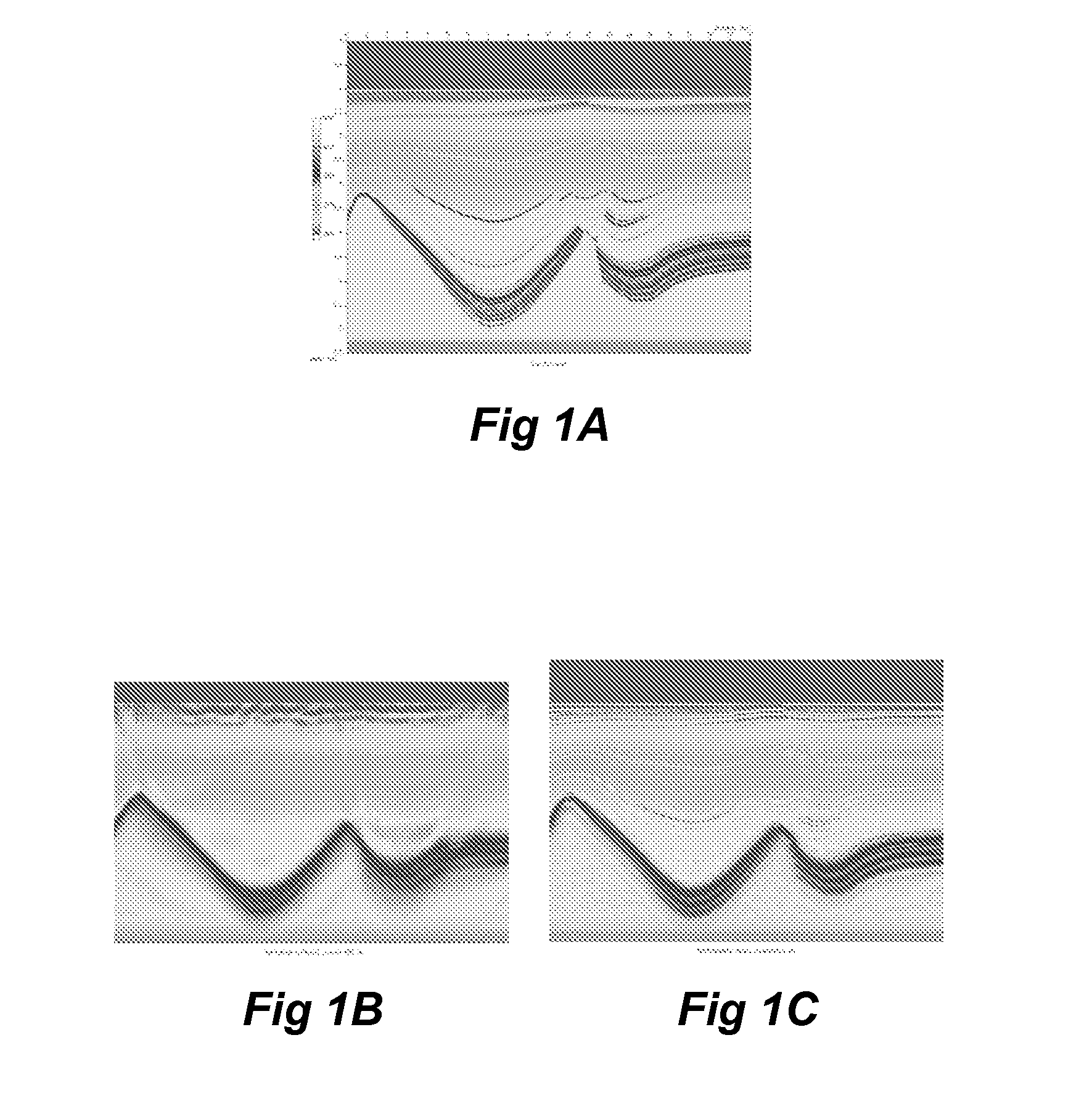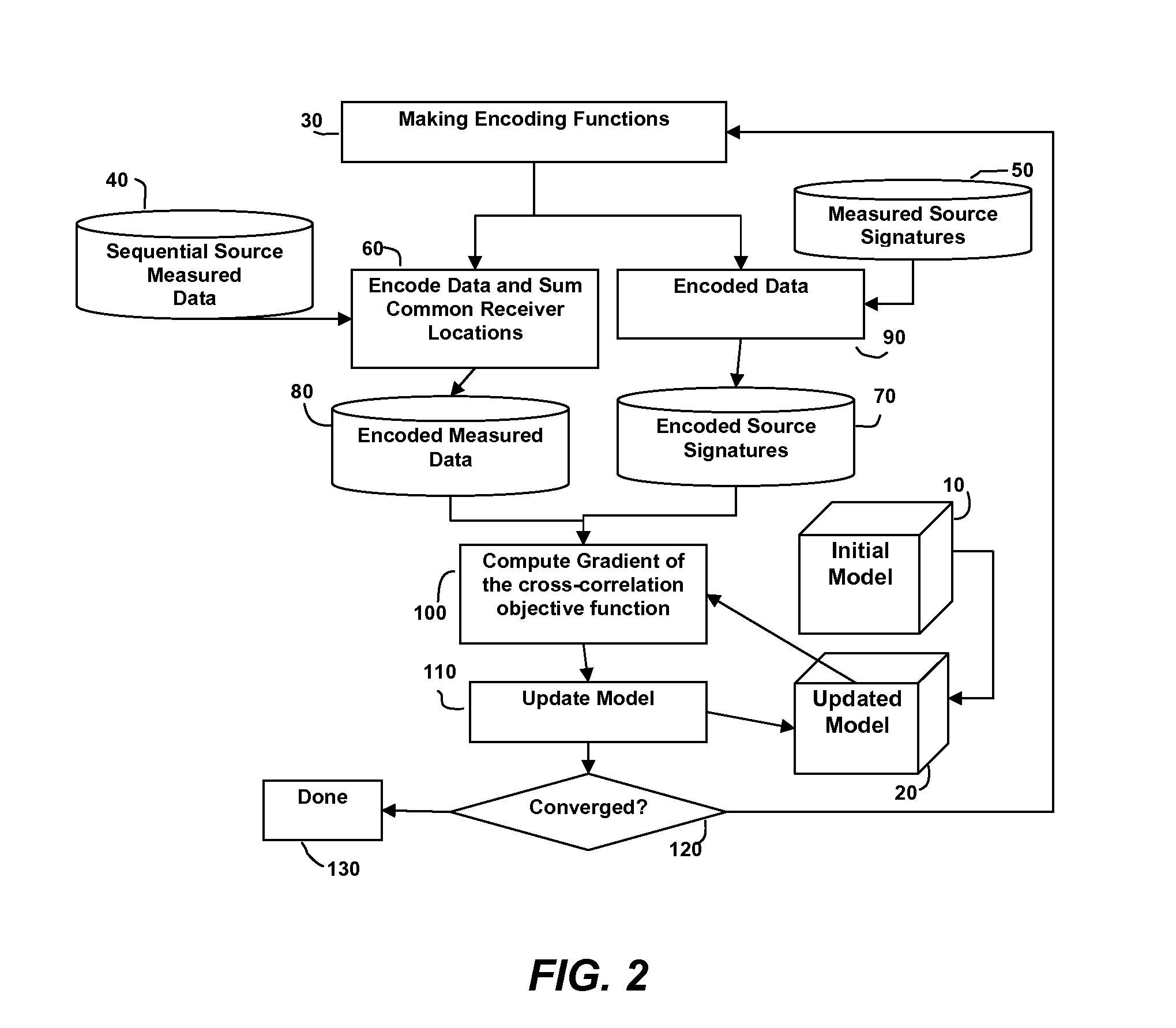Simultaneous Source Inversion for Marine Streamer Data With Cross-Correlation Objective Function
a streamer data and objective function technology, applied in the field of geophysical prospecting, can solve the problems of iterative inversion, high computational cost, and high computational cost of seismic full wavefield inversion
- Summary
- Abstract
- Description
- Claims
- Application Information
AI Technical Summary
Benefits of technology
Problems solved by technology
Method used
Image
Examples
Embodiment Construction
[0059]The method proposed in this patent memo uses a cross-correlation objective function to invert encoded simultaneous source data. The raw shot gathers that are encoded to form simultaneous source data have missing near and far-offsets which is typical in a marine streamer survey. An intuitive understanding of how this cross-correlation objective function works for full wave field inversion (“FWI”) for non-fixed receiver data can be obtained by considering the imaging problem. In FWI, one or many modes of the seismic wavefields are inverted to obtain a physical property model of the Earth. First consider the imaging problem for simultaneous source reverse time migration (“RTM”).
[0060]Assume two measured wavefields d1, d2 in the subsurface due to two sources and they are encoded given by,
dfixedencoded=α1Pd1+α2Pd2
[0061]Where P is the projection operator that projects the data onto all receivers required for fixed receiver geometry. So if the operator P is same for all shots then i...
PUM
 Login to View More
Login to View More Abstract
Description
Claims
Application Information
 Login to View More
Login to View More - R&D
- Intellectual Property
- Life Sciences
- Materials
- Tech Scout
- Unparalleled Data Quality
- Higher Quality Content
- 60% Fewer Hallucinations
Browse by: Latest US Patents, China's latest patents, Technical Efficacy Thesaurus, Application Domain, Technology Topic, Popular Technical Reports.
© 2025 PatSnap. All rights reserved.Legal|Privacy policy|Modern Slavery Act Transparency Statement|Sitemap|About US| Contact US: help@patsnap.com



